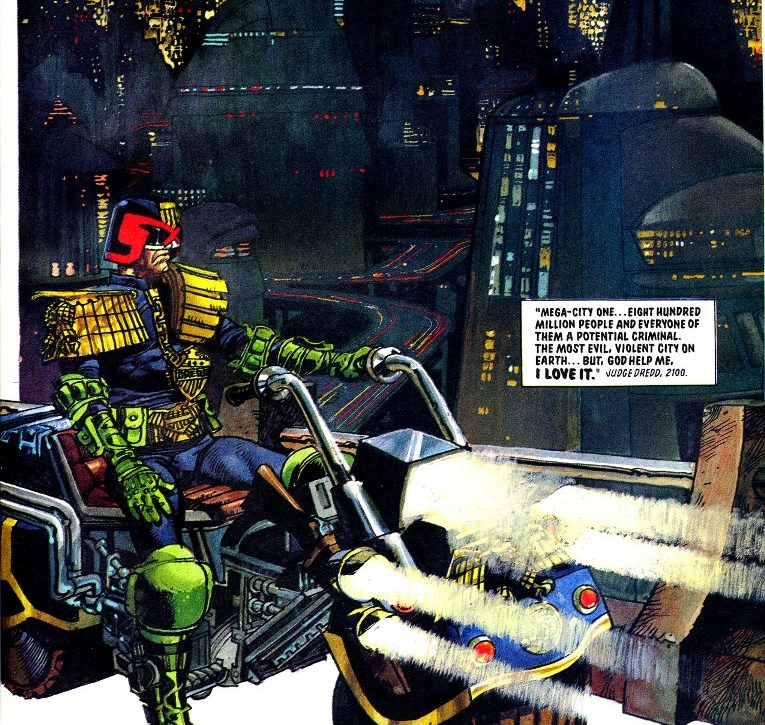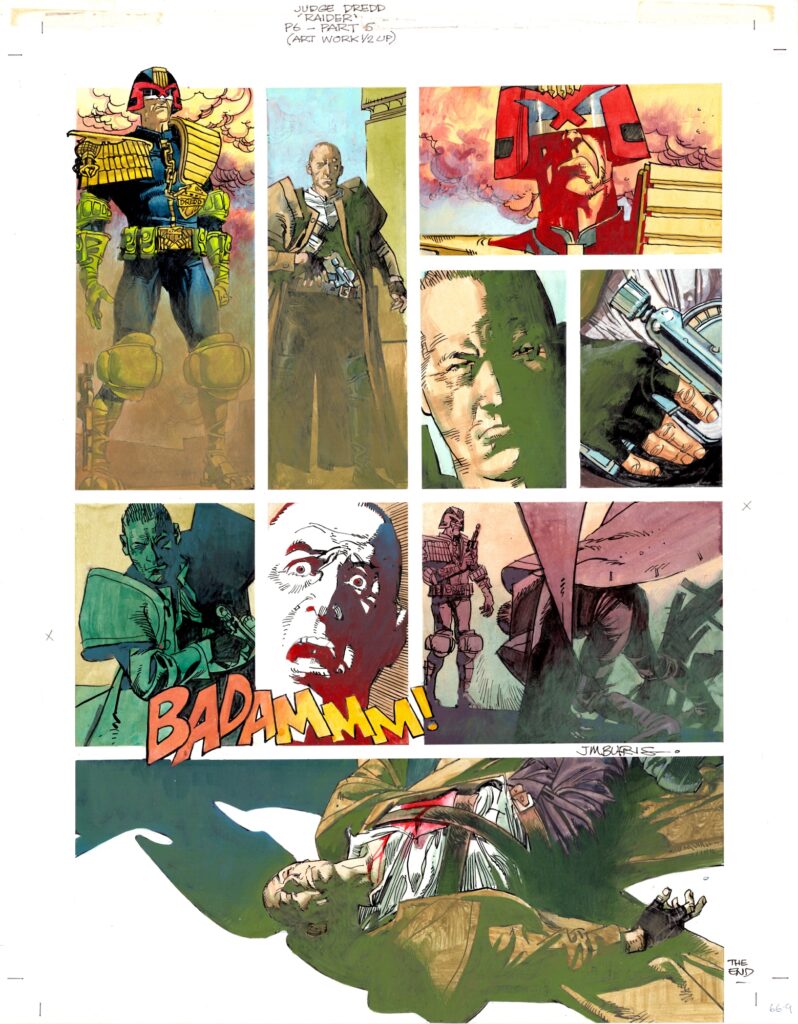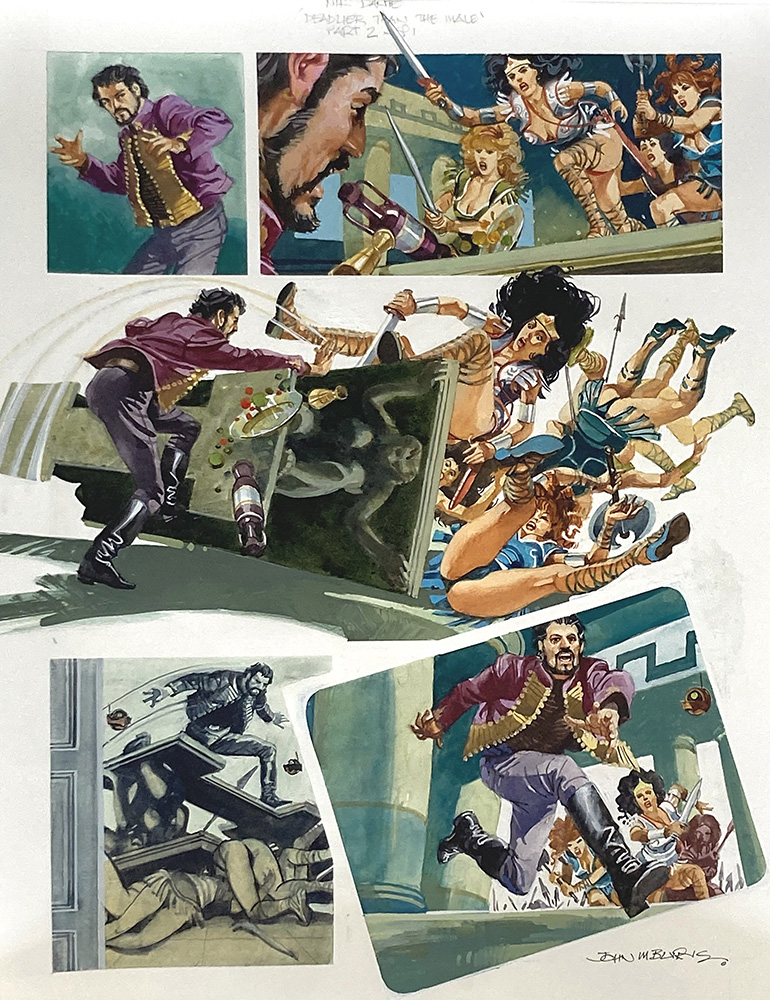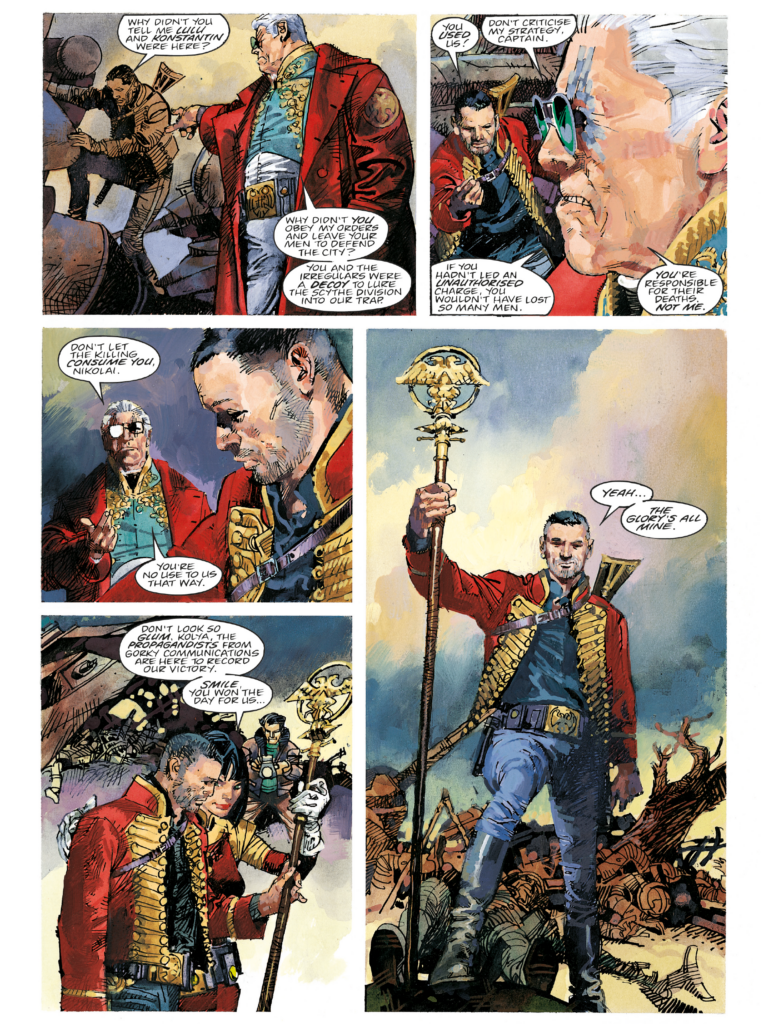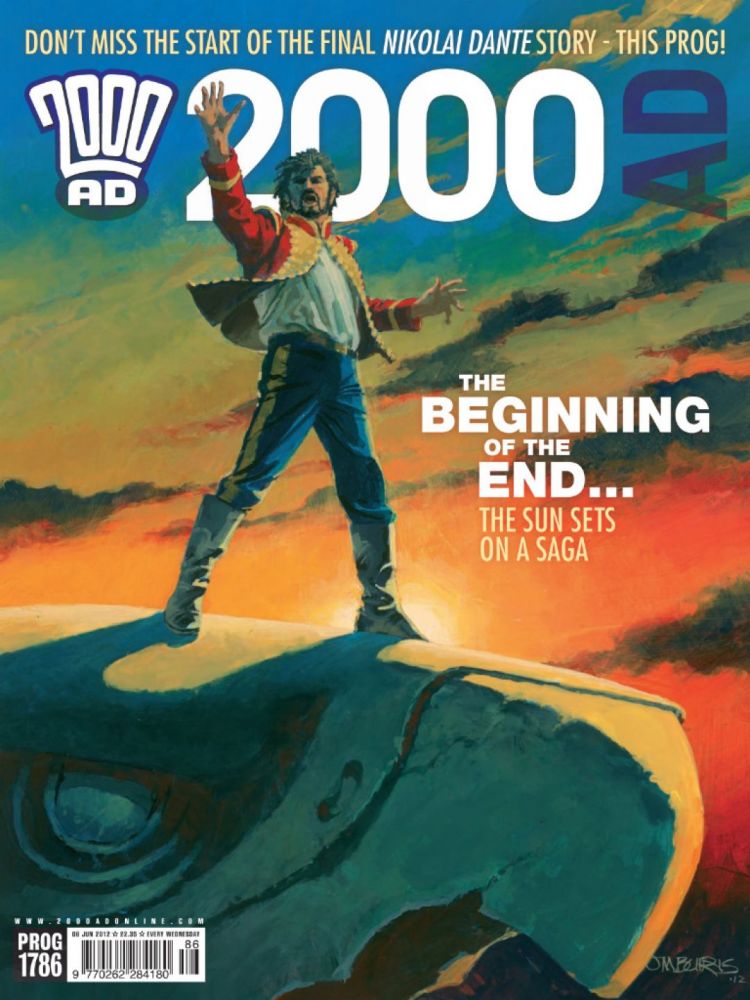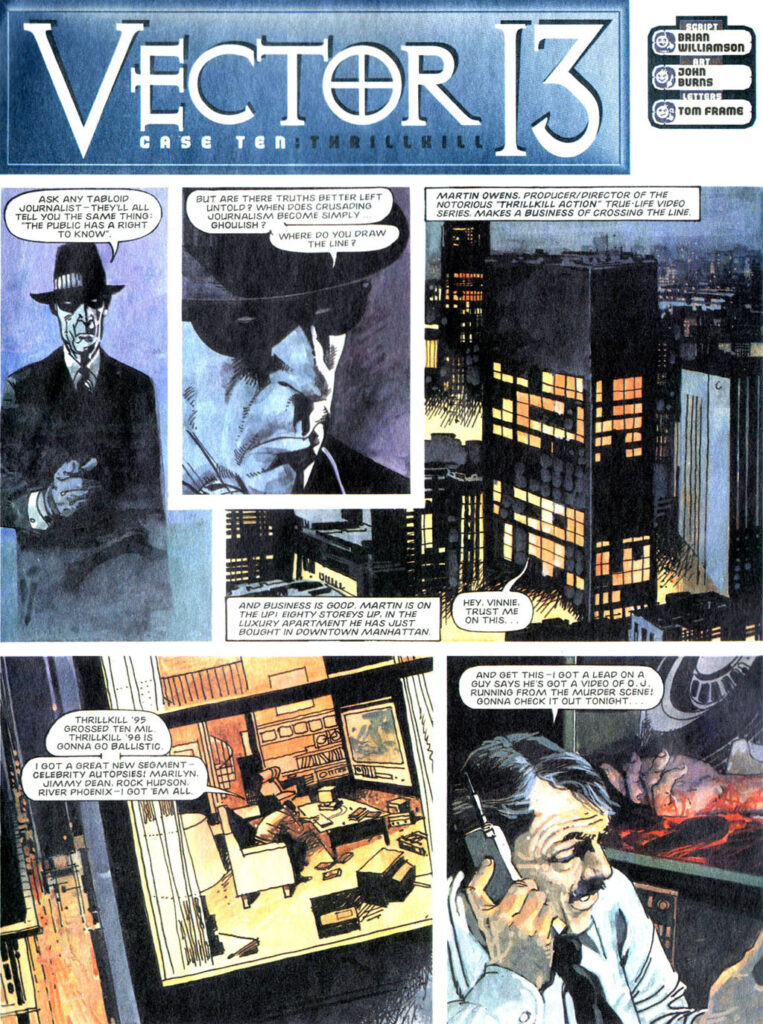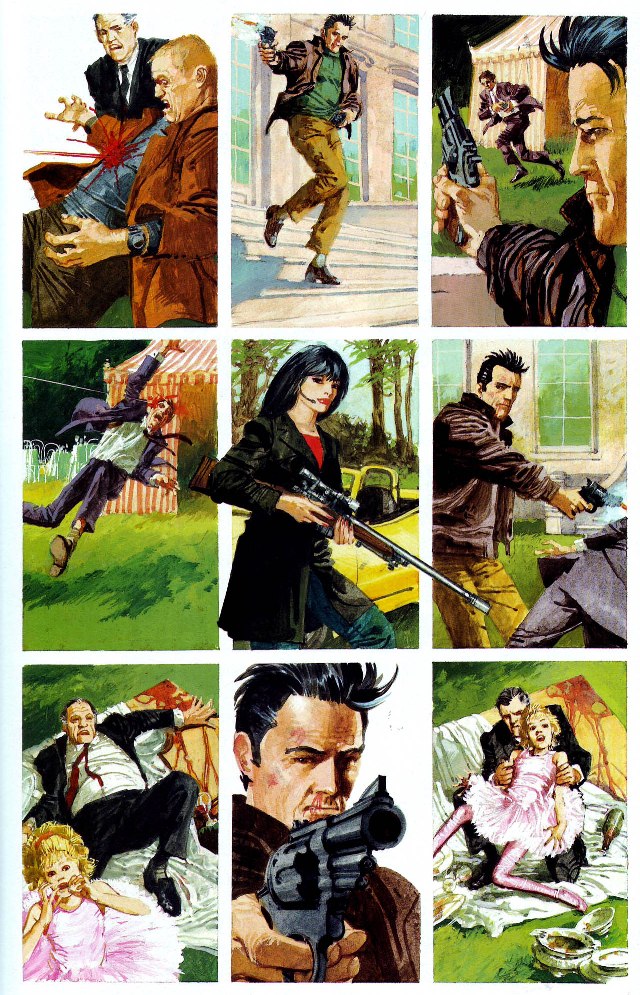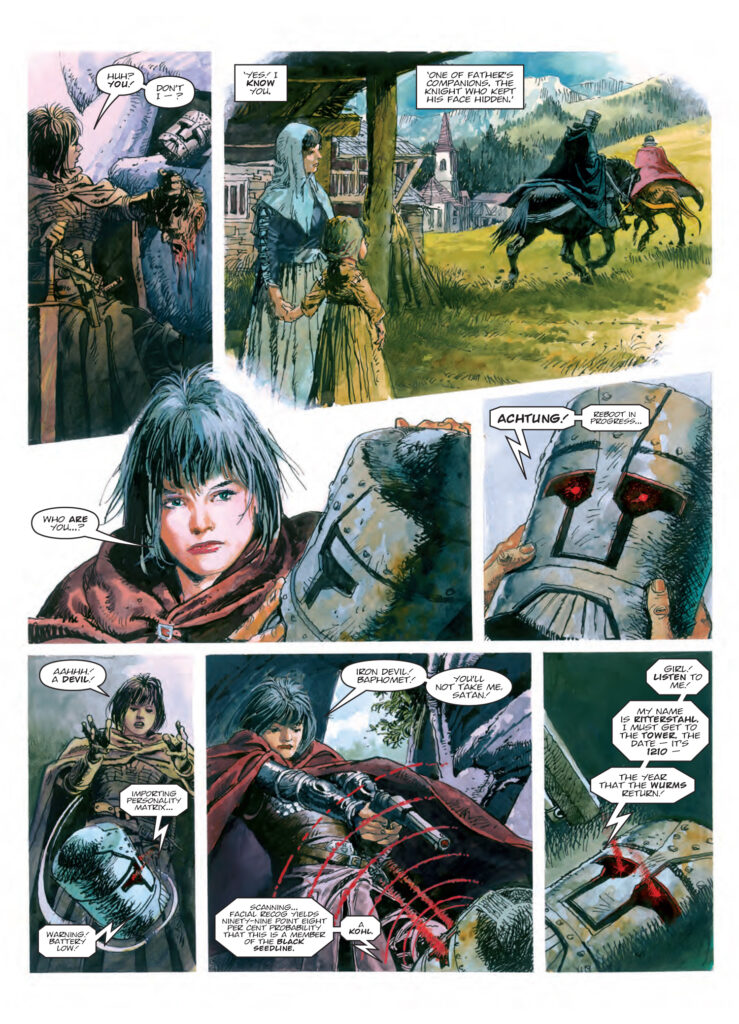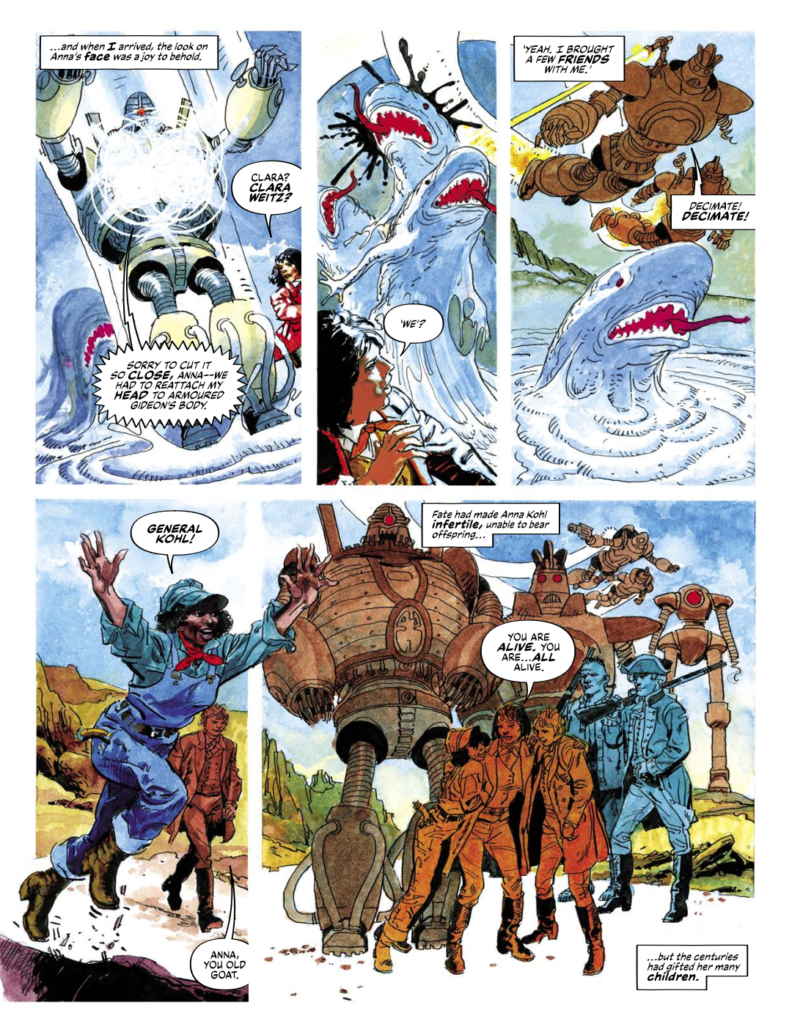John M. Burns 1938 – 2023
3rd January 2024
Everyone at Rebellion is deeply saddened to learn of the death of artist John M. Burns.
Well known amongst 2000 AD fans for his extensive work on stories including Judge Dredd, The Order, and Nikolai Dante, Burns’ career extended across six decades, inspiring entire generations of artistic talent to pick up a pencil and brush. The majority of his work in comics was fully-painted – and even through to his most recent artwork for the Prog, all his pages were delivered directly from his home in Cornwell to the 2000 AD office in poster tubes, rather than sent via PDF. His work had a wonderfully tangible quality as a result, his incredibly detailed paints leaving the office marvelling over every single panel he created.
Born in Essex in 1938, Burns started his comic career in his early twenties, working as an apprentice for titles including School Friend and Junior Express. It was in 1958 that his first major comics work was published, in Champion The Wonder Horse Annual. Through the 1960s he became more and more prolific, working as artist on a variety of comics and magazines including Eagle, Wham!, Diana and more, drawing stories for characters like Dan Dare and Kelpie the Boy Wizard. In addition, he worked tirelessly through the years on newspaper strips including The Seekers, Danielle, George & Lynne, Jane – and Modesty Blaise, one of his most high-profile roles to date.
As he entered the 1970s he was hugely in-demand, as new technology meant that comics and magazines like TV Action, Countdown and Look-In could finally print his painted work in full-colour as intended. He inspired generations of children with comic adaptations of familiar franchises including Doctor Who, Mission Impossible, Buck Rogers, Magnum P.I. and so many more.
For an artist of Burns’ distinct pedigree, there was no doubt that 2000 AD would eventually come calling, and he debuted in the Prog with a Judge Dredd strip written by Garth Ennis called “Garbage Disposal”. Although he might not have been the artist people would predict would be a strong fit for Dredd, Burns immediately proved his adaptability, creating a vision of Mega-City One which felt all his own, and introduced a welcome noir sensibility to Judge Dredd’s world.
It was with his other work for 2000 AD that he arguably truly cemented his status as an industry legend, however. Well remembered for his contributions to comics like Vector 13, Witchworld and Durham Red, Burns was co-creator of the paranoid conspiracy thriller series Black Light with Dan Abnett and Steve White. For many readers, though, his name is most well-remembered for one series in particular: Nikolai Dante.
Created by Robbie Morrison and Simon Fraser in the 90s, Nikolai Dante quickly became a firm fan-favourite in 2000 AD, telling the story of a swashbuckling hero who wanted nothing more than to romp around a futuristic Russia and cause chaos in his wake. The demand for new stories with the character meant that Fraser needed other artists to fill-in from time to time, and Burns was one of the artists chosen for the assignment. His style was completely at home with the romantic nature of Dante as a character, and he returned to the character repeatedly across the course of the series: when Nikolai Dante started to turn towards darker storylines, Burns was more than ready to create exceptional and shocking battle sequences, depicting the full horrors of the war which engulfed Nikolai’s world for years and years.
When Nikolai Dante finally came to a decisive end, Burns would team up again with Morrison for The Bendatti Vendetta, a 1970s-inspired action thriller which brought cool style to a story of gangster revenge. By now Burns was a superstar in comics; a name who could bring people to 2000 AD simply by being attached to a story. Readers flocked to see what he’s get up to next, from the Yazuka-inspired Angel Zero with Kek-W to his most recent classic series The Order. Always unpredictable, this long-running historical epic lasted for seven stories, with Burns offering a masterclass in storytelling with each and every page he painted. By the time his run on The Order concluded, Burns was in his eighties, with six decades of work behind him, and still leading the way as an artist.
His legacy is obvious: his artwork inspired countless artists across multiple decades, and his final work – Nightmare New York, with frequent collaborator Kek-W – will be published later this year in 2000 AD.
Our most heartfelt condolences go out to all of John’s family and friends.
